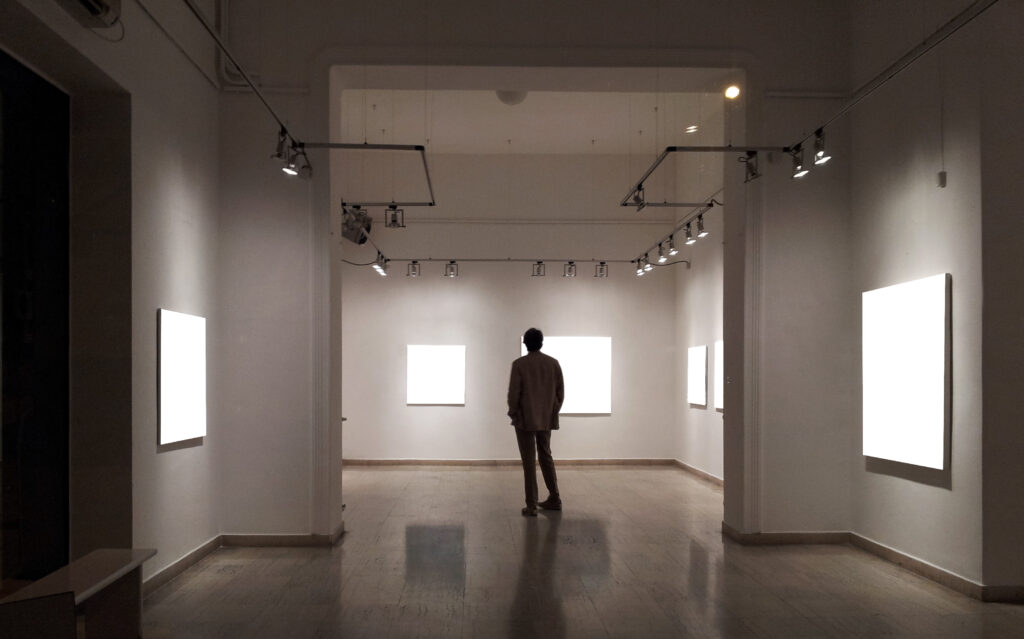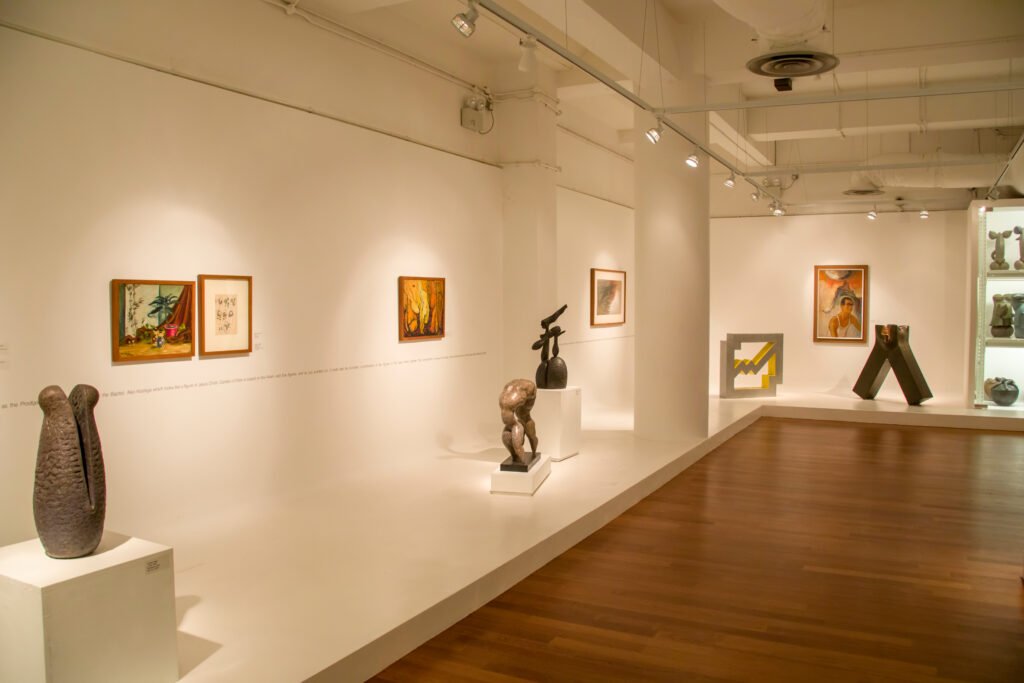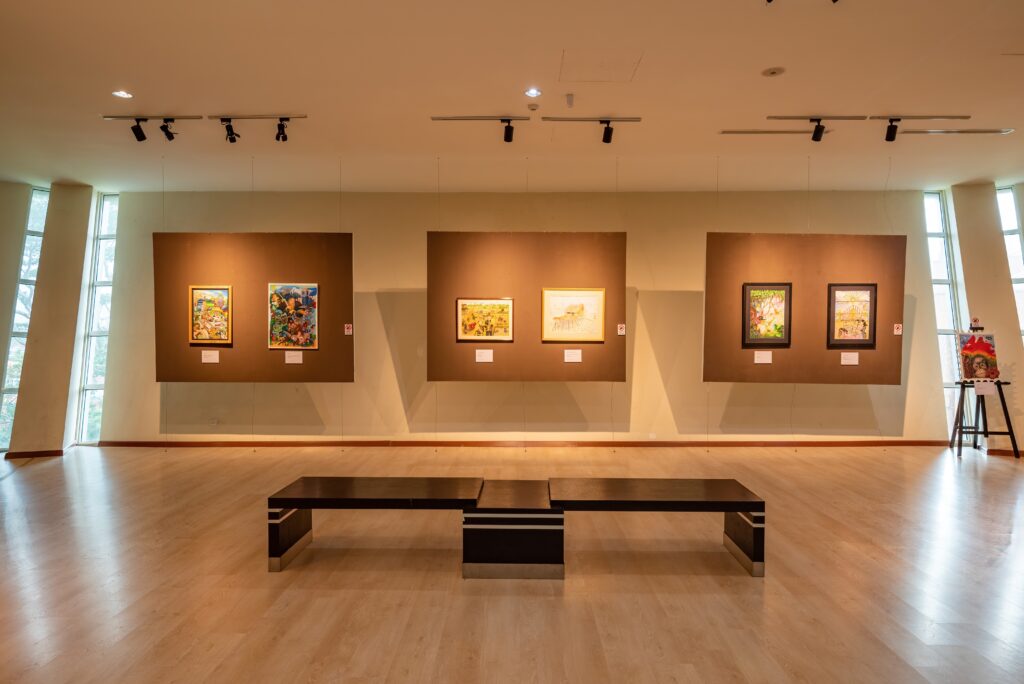What is Art Gallery Lighting?
Art gallery lighting is the strategic and aesthetic use of light to display and accentuate artworks in a gallery setting. Art gallery lighting is not just about illumination. It’s about setting the right mood, emphasizing the best features of an artwork, and creating an environment that allows the art to speak for itself.This involves a careful balance of intensity, direction, color temperature, and fixture design to ensure each artwork is showcased in its optimal environment.

How Crucial is Lighting in an Art Gallery?
The role of lighting in art galleries extends beyond mere illumination:
- Enhancing Artworks: Proper lighting can bring out the colors, textures, and depths of an artwork, adding layers of interpretation and appreciation.
- Setting the Mood: The ambiance of a gallery affects the viewer’s experience. Soft lighting might evoke introspection, while brighter lights could stimulate excitement.
- Preservation: Too much light or UV rays can damage sensitive artworks. It’s not just about looking good, but also about longevity.

Considerations When Choosing Gallery Lighting
- Color Rendering Index (CRI): This indicates how accurately the light source will reveal the true colors of the artwork. The higher, the better!
- UV Emissions: Harmful UV rays can degrade artworks over time. LEDs, which we’re particularly fond of at solutionproled, emit minimal UV light.
- Intensity & Dimming: Some pieces shine under intense light, while others require a softer glow. Adjustable intensity is crucial.
- Heat: Traditional bulbs like halogens emit more heat, potentially damaging sensitive artworks.
- Brightness: Too bright can cause glare and even damage. Too dim, and you’re not doing the artwork justice.
- Color Temperature: While a study showed that cooler temperatures might be preferred for sculptures, warmer tones might work better for paintings.

The Different Types of Lighting
Ambient Lighting
Often referred to as the gallery’s “general lighting”, ambient lighting provides the primary source of illumination for the space.
- Purpose: Ensures visitors can navigate the gallery safely and comfortably.
- Characteristics: Soft, even light without sharp contrasts.
- Fixtures: Recessed or track lights, pendant lights, and chandeliers can be used for this purpose.
Task Lighting
Though not as common in galleries, task lighting serves specific functional areas such as reading corners, cashier sections, or interactive art stations.
- Purpose: Provide focused light for specific tasks.
- Characteristics: Brighter than ambient lighting, with a directed beam.
- Fixtures: Desk lamps, pendant lights, or adjustable spotlights.
Accent Lighting
This is the superstar of gallery lighting. It’s all about showcasing the artwork.
- Purpose: Highlight and accentuate specific artworks or display areas.
- Characteristics: Typically three times brighter than ambient light, focusing on the artwork without causing glare or shadow.
- Fixtures: Spotlights, track lights, and wall-mounted fixtures.
Decorative Lighting
As the name suggests, this type of lighting is all about aesthetics. It’s the cherry on top!
- Purpose: Add aesthetic appeal and enhance the gallery’s ambiance.
- Characteristics: Unique designs, often becoming art pieces in their own right.
- Fixtures: Ornate chandeliers, artistic lamps, and other designer fixtures.

How Do LEDs Play a Role in Art Gallery Lighting?
- With advancements in technology, LED lights have become the go-to choice for art galleries. Not just because they’re energy-efficient (although that’s a massive plus), but because they offer unparalleled flexibility in terms of brightness, color temperature, and even direction.
- According to a recent survey, more than 80% of galleries have switched to LEDs in the last five years. LEDs don’t emit UV rays, making them safer for artworks. Moreover, with our expertise at Solutionproled, we ensure that the LED lights we manufacture are tailored to meet specific project requirements.
Can We Use Art Gallery Lighting Concepts at Home or Offices?
Absolutely! Just because it’s called “art gallery lighting” doesn’t mean it’s exclusive to art galleries. If you have an artwork or even a feature wall at home or your office that you’d like to highlight, the principles of art gallery lighting can come in handy. Imagine having a personal space that feels like a high-end gallery – sophisticated, dramatic, and utterly captivating.

Conclusion
Lighting, especially in an art gallery, is not just a functional requirement. It’s an integral part of the viewing experience, enhancing the art and enveloping the viewer in its magic. Whether you’re setting up a new gallery, looking to revamp your current one, or even aiming to elevate your personal space, remember that the right lighting can make all the difference. And when in doubt, you know who to call! After all, at Solutionproled, we don’t just manufacture lights; we bring art to life.






